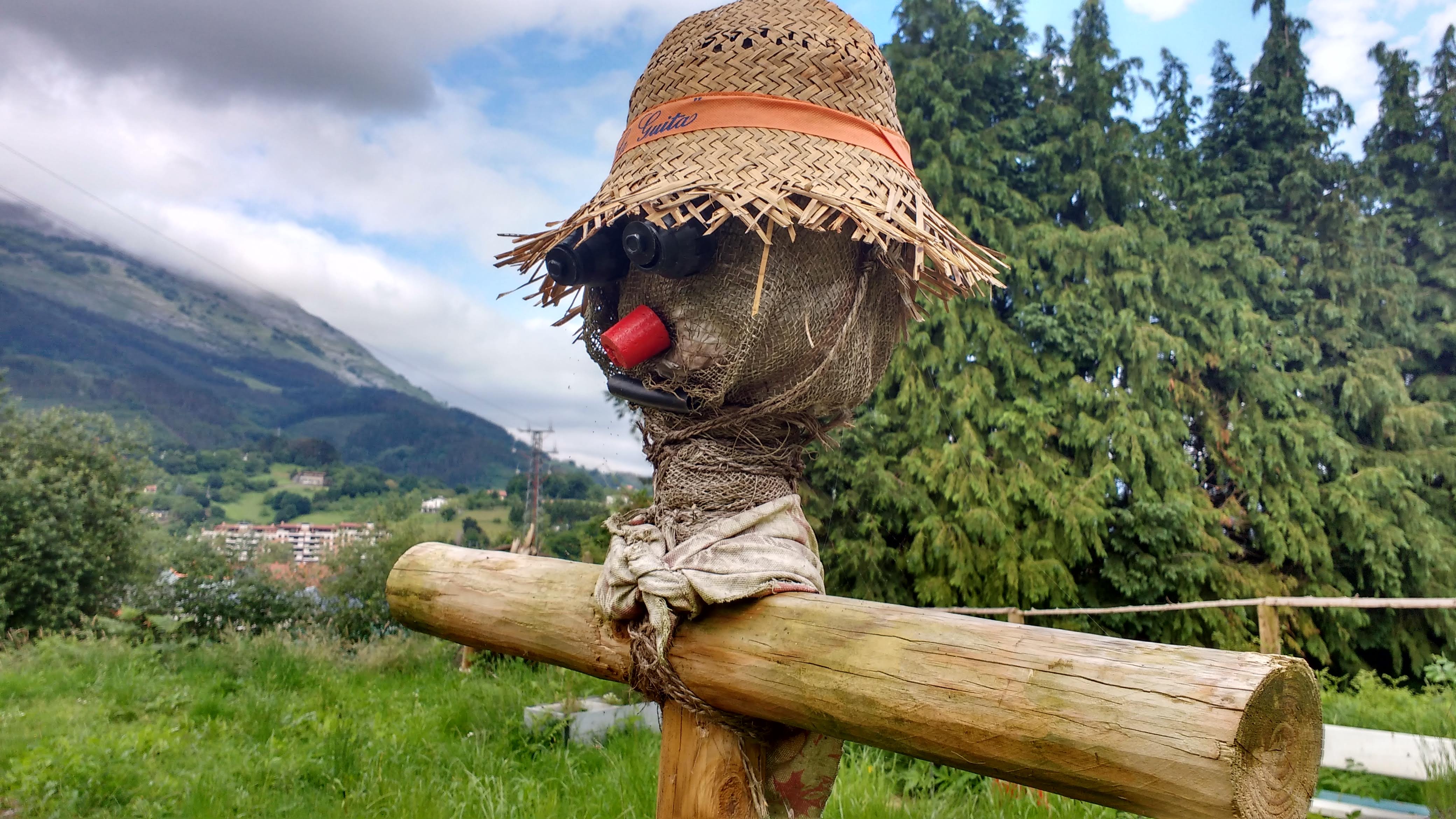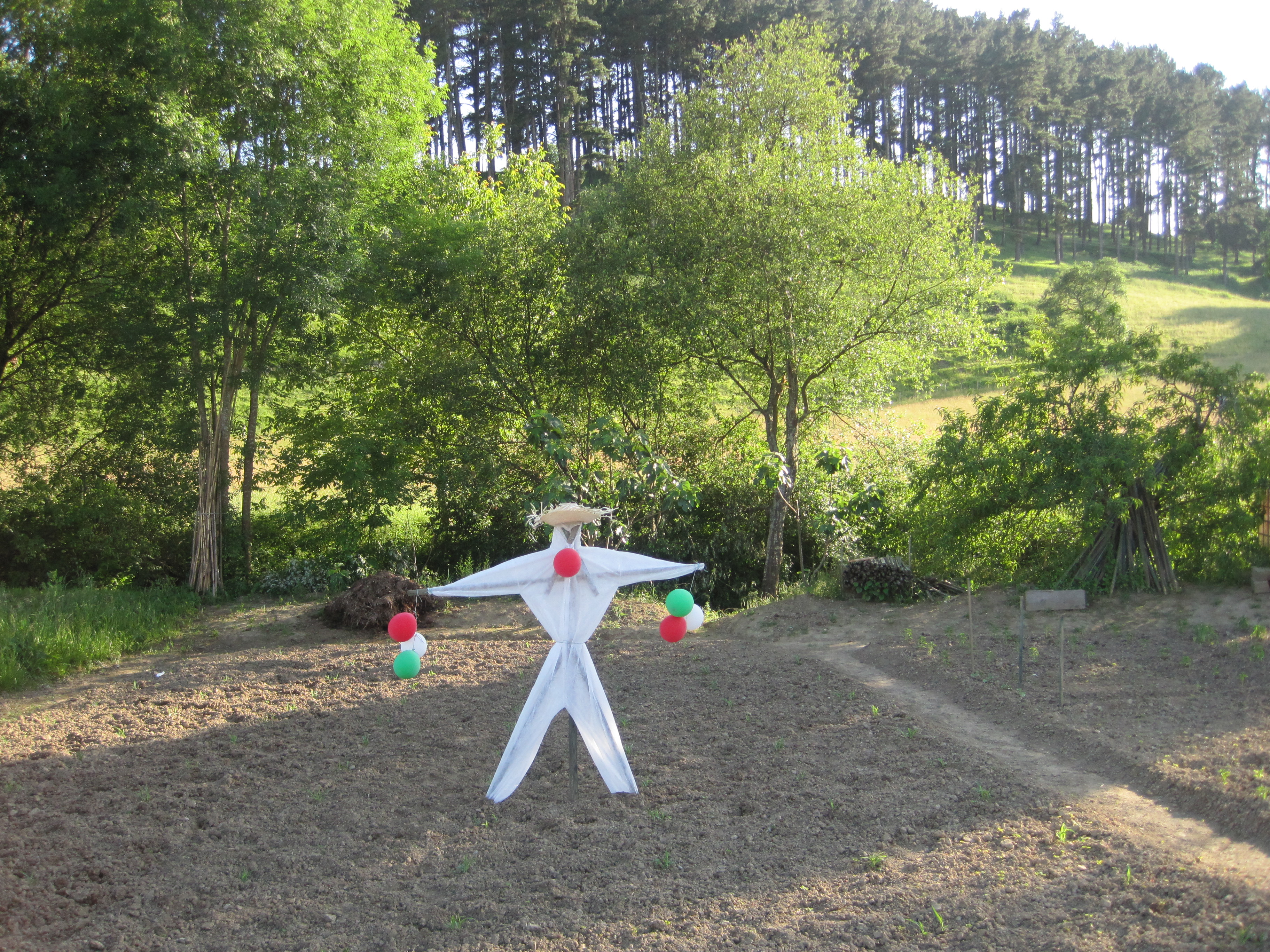Basque ethnography at a glance

Scarecrow. Azkoitia (Gipuzkoa), 2018. Idoia Tolosa. Labayru Fundazioa Photographic Archive.
Placed in open cultivated fields, vineyards and fruit groves, homemade humanoid scarecrows have been a common way to protect freshly broadcast seed, growing crops and fruit harvests from birds, though in recent times are being partly substituted by more effective methods. They have been mostly used in fields of wheat and maize, and still guard young onion plants, turnip intended for seed, broad beans and green peas with filled pods… Several dummies might be needed for large areas. In fields of crops they are installed in June, and in vineyards in September; fruit trees with abundant ripe fruit, especially cherry trees, are also protected. Common names for ‘bird scarers’ are espantapájaros, in Spanish, and txorimaloak, txori-jagoleak or kusoak, among others, in Basque.
Sparrows (artatxoriak, from Basque artoa ‘maize’ and txoria ‘bird’), blackbirds, crows, rooks, jays and magpies are among the birds that cause the most damage to agricultural crops and fields.

Txori-jagolea. Muxika (Bizkaia), 2016. Segundo Oar-Arteta. Labayru Fundazioa Photographic Archive.
Scarecrows are traditionally built out of old clothes stuffed with grass or straw and attached to a vertical post driven into the ground. A horizontal pole can be used for the arms and a sheaf covered with a hat or kerchief for the head. They are often dressed in men’s clothes and sometimes women’s.
Multiple methods have been used to scare birds, but as country folks best know, it is not an easy task to deceive and deter birds, because they soon notice the model is not the real thing and persist in their pursuit.
Whirligigs perched atop an upright stake have been resorted to in some places. Such structures consist of wooden vanes that turn in the wind and hit a piece of tin so the sound drives birds away. Dead crows and magpies nailed at the end of sticks planted in the ground or a feathered potato simulating a bird have likewise served the same purpose. In Liginaga (Zuberoa) a sickle positioned with its blade pointing upwards was formerly believed to protect chickens from sparrowhawks.
Besides the mentioned kinds of scarecrows, rather sophisticated figures, such as mannequins, have more recently been created with innovative technology. Wind chimes made from metallic containers or bottles, reflecting pieces of glass and mirror, or even plastic carrier bags that move in the air have also been commonplace and widespread. The practice of hanging cassette tapes, CDs or DVDs comes later.
Now as before, fruit orchards are usually protected with thick nets when the fruit is ripe. Some, however, might argue the shotgun is the only effective way of keeping birds away.
Segundo Oar-Arteta – Etniker Bizkaia – Etniker Euskalerria Groups
Translated by Jaione Bilbao – Ethnography Department – Labayru Fundazioa
Reference for further information: Agriculture, part of the Ethnographic Atlas of the Basque Country collection.

